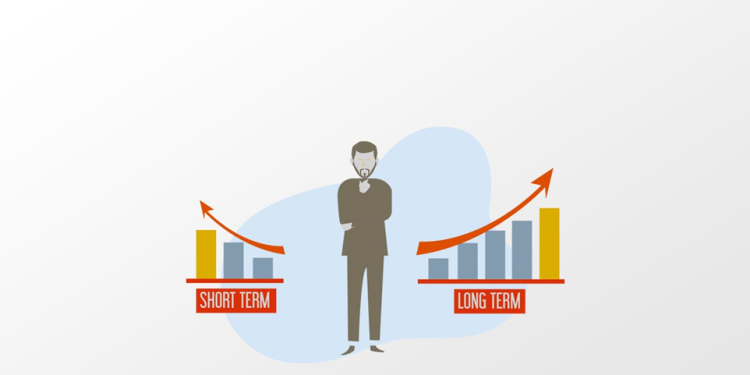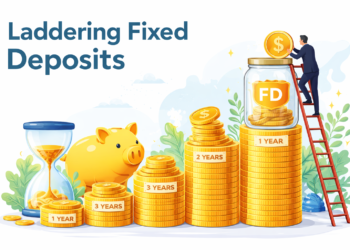The Fear and Greed Index is a useful tool for gauging investor sentiment, showing how emotions like fear and greed affect stock market trends. This index helps investors identify whether the market is in a cautious or risk-taking mode. Both short-term and long-term investors can benefit from understanding shifts in this index, especially when combined with technical indicators like the bullish engulfing pattern. This article explores how to use the Fear and Greed Index to improve decision-making in short- and long-term investment strategies.
Understanding the Fear and Greed Index
The Fear and Greed Index measures market sentiment, ranging from 0 (extreme fear) to 100 (extreme greed). Lower scores indicate fear, usually leading to risk-averse behaviour and possible undervaluation, while higher scores suggest greed, pointing to overvaluation and increased market optimism. This index is created by analysing factors like market momentum, volatility, and the put-call ratio, providing insights into whether the market mood favours caution or optimism.
- Fear: Low scores indicate high fear, suggesting that investors are hesitant. For long-term investors, this can highlight potential buying opportunities in undervalued assets.
- Greed: High scores reflect optimism, which can lead to overvaluation. Short-term traders might benefit from this, but long-term investors may need to tread carefully.
Influence on short-term investments
Short-term investors, like day traders and swing traders, rely on sentiment to capture quick price movements. The Fear and Greed Index is valuable for understanding market volatility and helping traders manage risks.
1. Timing entries and exits
Short-term traders watch for greed-driven upswings to maximise quick gains, while high fear levels may signal short-selling opportunities. When the index shows strong greed, it is often a good time to take profits, while high fear signals potential exits or defensive moves.
2. Volatility management
Fear generally leads to higher market volatility, creating opportunities for rapid trades but requiring careful risk management. High greed, on the other hand, often signals more stable upward trends, ideal for capitalising on short-term gains.
3. Confirming with the bullish engulfing pattern
For short-term trading, combining the Fear and Greed Index with technical indicators like thebullish engulfing pattern can increase confidence in market entry points. A bullish engulfing pattern within a greed-driven market provides a strong buy signal, helping traders ride upward momentum.
4. Aligning with risk tolerance
Short-term traders use the index to gauge when to enter riskier trades or hold back. High greed levels may justify increased exposure, while high fear suggests waiting for stability before making new trades.
Influence on long-term investments
For long-term investors, the Fear and Greed Index provides insights into broader market trends. Rather than influencing daily decisions, it helps identify times of overvaluation and undervaluation.
1. Buying during high fear
Periods of high fear create buying opportunities for long-term investors willing to take on short-term volatility. Undervalued stocks can be added to portfolios, aligning with a long-term growth outlook.
2. Selling or reducing exposure during high greed
When the index signals high greed, stocks may be overvalued. Long-term investors might consider reducing exposure, locking in gains, or reallocating funds to more stable assets.
3. Supporting portfolio rebalancing
The Fear and Greed Index can guide portfolio rebalancing. During periods of high fear, defensive sectors might outperform, while high greed might favour growth sectors. Adjusting allocations based on sentiment can optimise returns over time.
4. Confirming long-term entry points
Long-term investors can also use the index in conjunction with technical patterns like the bullish engulfing pattern. When a bullish engulfing pattern aligns with rising sentiment, it can confirm entry points for long-term positions.
Key differences between short-term and long-term approaches
- Short-term traders: Use the index to capture quick movements by buying or selling based on daily sentiment changes. They closely monitor shifts for intraday and weekly trades.
- Long-term investors: Focus on overall trends, viewing high fear as a chance to buy at a discount and high greed as a signal to consider reducing risk exposure.
By adapting their use of the Fear and Greed Index, both types of investors can optimise their strategies for their individual time horizons.
Key considerations for using the Fear and Greed Index
- Watch for extreme sentiment: High fear often signals undervaluation, while high greed can indicate overvaluation, creating risks and opportunities.
- Integrate with analysis: Sentiment data is most effective when paired with fundamental and technical analysis, ensuring balanced decision-making.
- Account for global influences: External events can impact sentiment significantly, so consider the index in the broader context of global economic trends.
- Adjust for strategy: Adapt your use of the index based on whether you are a short-term trader or a long-term investor, as each will have different responses to sentiment shifts.
Conclusion
The Fear and Greed Index is a valuable tool for both short-term and long-term investors, offering insights into market sentiment that support strategic decision-making. Short-term traders use the index to time entries and exits, manage volatility, and confirm patterns like the bullish engulfing pattern. Long-term investors, meanwhile, rely on the index to identify undervalued buying opportunities and manage risk during high greed periods. By combining the index with other technical and fundamental tools, investors can develop a balanced approach that aligns with their specific goals and investment horizon. Integrating sentiment analysis into your overall strategy can lead to more informed, resilient, and profitable investment decisions.













